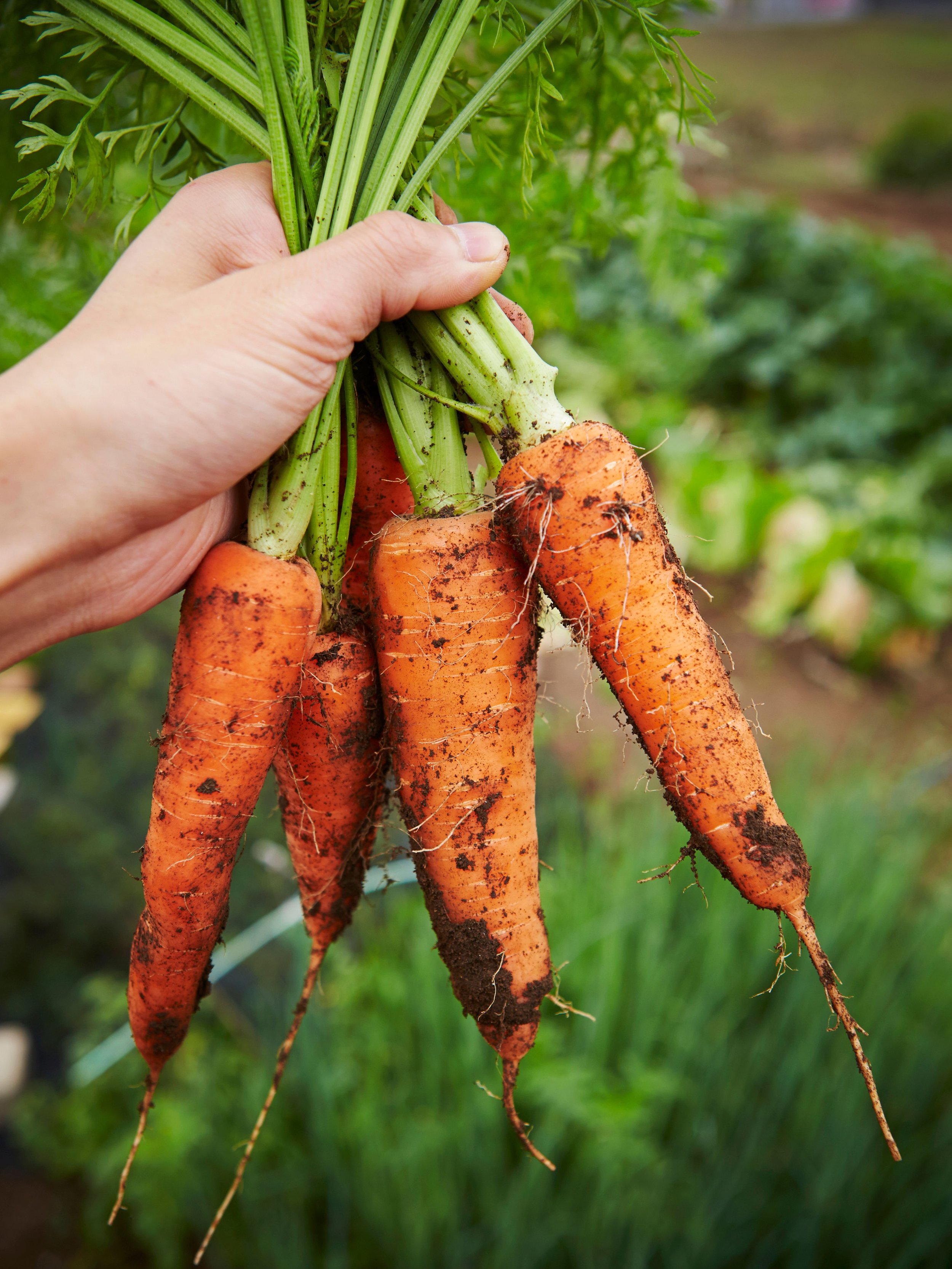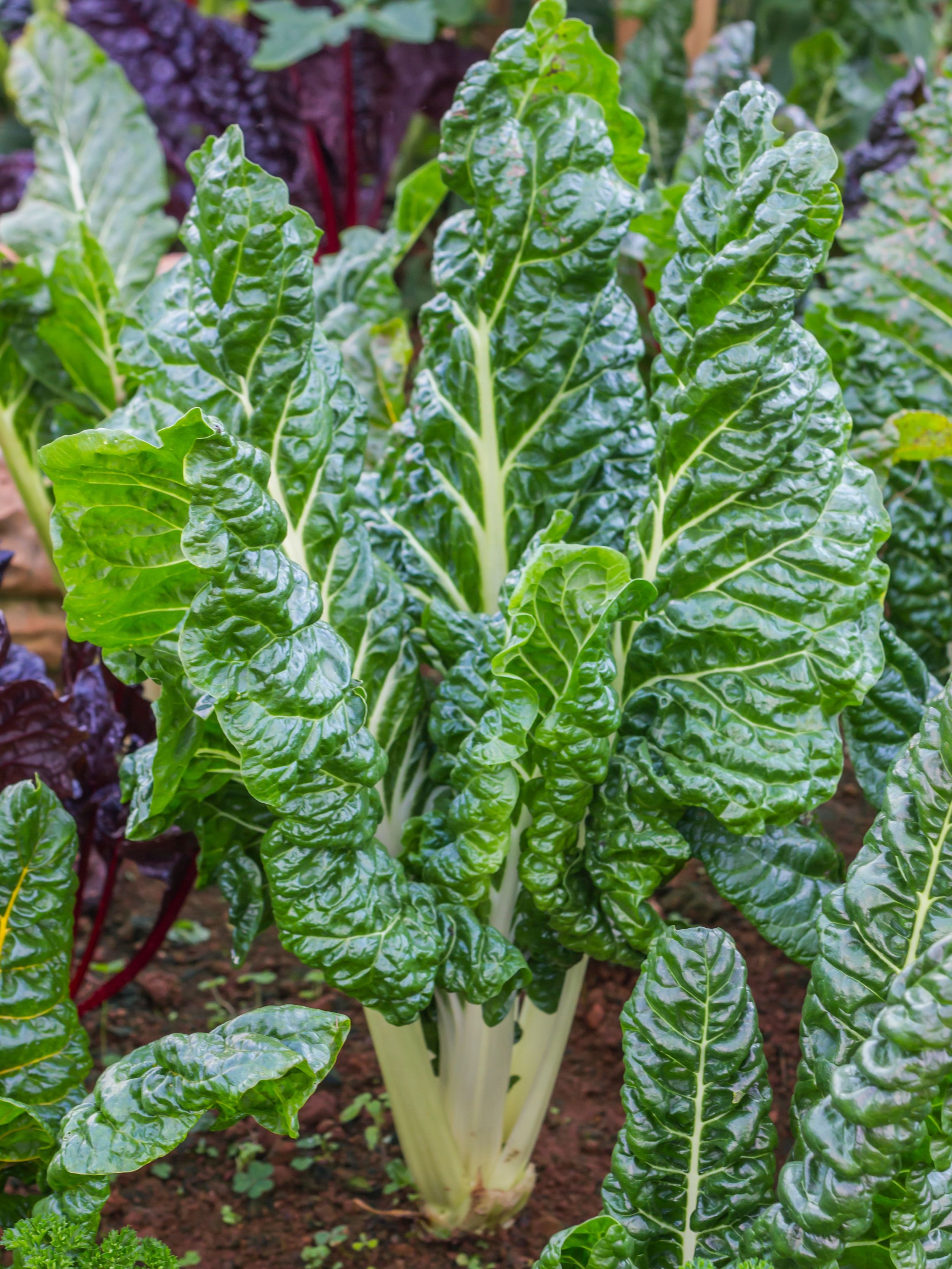Starting a Vegetable Garden
A Beginner’s Guide
Homegrown veggies just taste better, and starting your own veggie patch is easier than you think. This guide will take you through the basics—from choosing the right plants to soil prep and keeping plants healthy. In just a few short months, you’ll be ready to enjoy your own juicy tomatoes and crunchy carrots.
Choose Your Growing Space
You’ve probably already thought about where your new garden will grow, and it’s important to consider how much sunlight your space receives. Veggies need about 6-8 hours of direct sunlight to thrive, regardless of whether they are grown in containers, raised beds or planted directly in the ground.
Choose a space that you can water easily and has good drainage. Try to avoid any extreme climate conditions—you don’t want to plant on a windy hillside or up against a hot concrete wall. And if you’ll be growing in containers, make sure your containers are large enough for fast-growing veggie roots.
What Should You Grow?
There are dozens of vegetables to choose from, and the great thing about starting your own garden is that you can grow rare, unique or heirloom varieties that never make it to supermarket shelves.
Tomatoes are undoubtedly America’s most popular garden vegetable (yes, they are technically a fruit!), and that’s probably because store-bought tomatoes tend to be mushy and tasteless. But if tomatoes aren’t your favorite, then peppers, eggplant, zucchini, summer squash, cucumbers, and peas are also easy to grow.
Keep in mind which veggies will fit best in your space. If you’re growing on a balcony or smaller patio, then you’ll want to think about utilizing vertical space with vining vegetables like green beans, peas and tomatoes. You can also tie up cucumbers and some melons to grow vertically, as long as they have enough support.
Greens like chard, kale, and lettuce can also be a good choice for first-time gardeners, though lettuce tends to do better in cooler conditions in the spring or fall. Corn is delicious and fun to grow, especially for kids, but keep in mind that corn only produces one or two ears per stalk. You’ll need quite a bit of growing space to grow a lot of corn.
Gather Your Seedlings
Before you can start planting, you’ll need some seedlings—small, young plants that are ready to be placed into the garden. The easiest and most efficient option is to pick up some plants at your local garden center. If it’s spring or early summer, then there should be a good variety of unique seedlings from local growers. The staff at Plant Depot can help you choose the best varieties for your growing situation.
It’s better to get your new plants from a nursery instead of big box stores like Home Depot and Lowes. While these stores often have a large selection, many of these plants have been in their containers for too long and are root-bound, a condition where there are so many roots in a small pot that the plant can no longer absorb nutrients. The plants have also traveled a long way, making them more susceptible to disease.
If it’s early in the season and you have a bit of extra time, then consider starting your plants from seeds. Seeds are a fun and inexpensive way to start your garden, especially if you want to grow many plants or particularly rare varieties. Some seeds can be started directly in the garden, while others will need to get a head start in seed starting trays before they can be transplanted. Follow the instructions on the back of your seed packets, and your seedlings should be ready in about 4-6 weeks.
Prep Your Soil For Success
Nutrient rich soil will improve your harvest and keep your plants green and healthy, so make sure your soil is prepped before you plant. If you’re growing in containers, then soil prep is pretty easy. Pick up some good quality potting soil and fill your containers, lightly packing the soil as you go.
If you’re planting in the garden, you’ll want to make sure your soil isn’t too hard or compacted. Roots need to be able make their way through the earth to gather water and nutrients, and soil that’s very firm or clay-like could leave your young plants struggling. Consider using a tiller, a tool that breaks up and loosens the dirt so it’s easier to plant.
It’s also a good idea to place a fresh layer of garden soil or compost down before planting your seedlings. This will provide an extra boost of nutrients and help top up any minerals that might be lacking.
You’re Ready to Start Planting
After the prep work is done, it’s time to plant your seedlings into their growing location. Dig a hole that’s deep enough to accommodate the seedlings entire ball of roots—you don’t want the plant sticking up above the soil line. Then gently loosen the plant from its container, place it carefully into the hole, and fill in the rest of the hole with soil. Gently pat the soil into place, and make sure the plant seems sturdy and well-positioned.
Once you’ve planted all of your seedlings, water thoroughly but gently with a watering can or garden sprayer (you don’t want to damage your young plants with a hose on full strength). Some plants might look a bit wilted for a day or two as their roots readjust to their new home. Just keep the soil moist and they should be back to looking perky soon.
Water, Fertilize and Prune
Plants need just the right amount of water—too little and they’ll start to wilt, too much and their roots will get soggy. Aim to keep the soil damp but not saturated. Even if the top of the soil looks dry, it’s a good idea to stick your finger a few inches down into the soil and feel if it’s moist. If it’s dry, then it’s time to water. Plants may need watering every day in the summer heat.
You’ll also need to fertilize your plants if you want to keep them green and healthy throughout the growing season. Most veggies need a boost of nutrients every three or four weeks, though heavy growers like tomatoes should be fertilized every two weeks. Pick up a high-quality, organic vegetable fertilizer and use the amount indicated on the package.
Luckily, most vegetables don’t require pruning, but some vining plants like tomatoes and bush beans will require pruning for better production. There are lots of resources online, but if you need some more help, talk to the experts at Plant Depot about the best way to prune your plants.
Time to Harvest!
It can take a few months for your plants to start producing veggies, but your patience will be rewarded with delicious vegetables up until your first frost. You’ll probably end up with more zucchini and tomatoes than you can reasonably eat—friends and neighbors are usually more than happy to receive some of your homegrown produce. If your harvest is particularly abundant, you may want to think about donating to your local food bank too.







